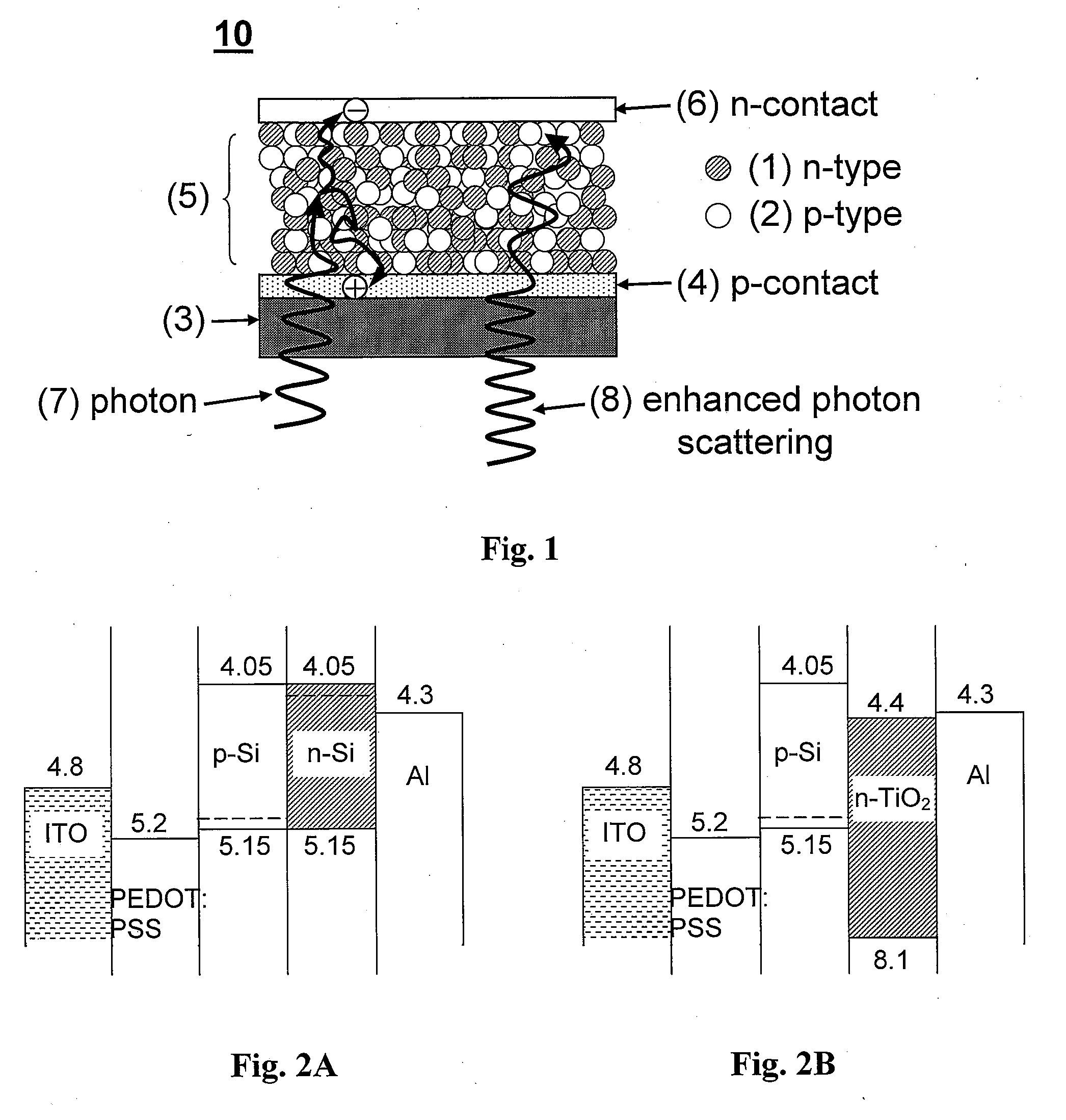Inorganic Nanocrystal Bulk Heterojunctions
a nanocrystal and bulk technology, applied in the field of thin film optoelectronic devices, can solve the problems of high material and manufacturing costs, complex and expensive fabrication processes, and uncompetitive si-based pv power production with conventional fossil fuel-based energy sources, and achieve the effect of low device manufacturing costs
- Summary
- Abstract
- Description
- Claims
- Application Information
AI Technical Summary
Benefits of technology
Problems solved by technology
Method used
Image
Examples
Embodiment Construction
[0021]In the interest of clarity, in describing the present invention, the following terms and acronyms are defined as provided below.
Acronyms:
[0022]CVD: Chemical Vapor Deposition[0023]ITO: Indium Tin Oxide[0024]FTO: Fluorine Tin Oxide[0025]PCE: Power Conversion Efficiency[0026]PV: Photovoltaic[0027]RIE: Reactive Ion Etching
Definitions
[0028]Acceptor: A dopant atom which, when added to a semiconductor, can form p-type regions.
Donor: A dopant atom which, when added to a semiconductor, can form n-type regions.
Heterojunction: An interface or junction formed between dissimilar materials.
Inorganic: A material or compound which does not contain an organic compound.
Nanocrystal: Any manufactured structure or particle with nanometer-scale dimensions, i.e., 1 to 100 nm.
n-type: A semiconductor for which the predominant charge carriers responsible for electrical conduction are electrons. Normally, donor impurity atoms give rise to the excess electrons.
Optoelectronic: Of or relating to electronic...
PUM
| Property | Measurement | Unit |
|---|---|---|
| thickness | aaaaa | aaaaa |
| thickness | aaaaa | aaaaa |
| thickness | aaaaa | aaaaa |
Abstract
Description
Claims
Application Information
 Login to View More
Login to View More - R&D
- Intellectual Property
- Life Sciences
- Materials
- Tech Scout
- Unparalleled Data Quality
- Higher Quality Content
- 60% Fewer Hallucinations
Browse by: Latest US Patents, China's latest patents, Technical Efficacy Thesaurus, Application Domain, Technology Topic, Popular Technical Reports.
© 2025 PatSnap. All rights reserved.Legal|Privacy policy|Modern Slavery Act Transparency Statement|Sitemap|About US| Contact US: help@patsnap.com



